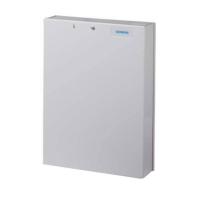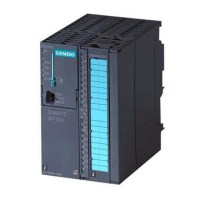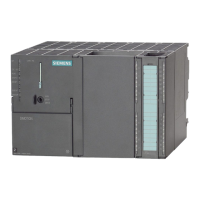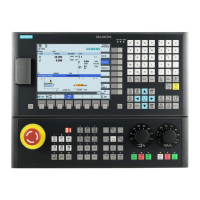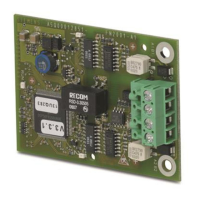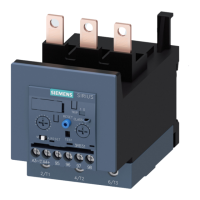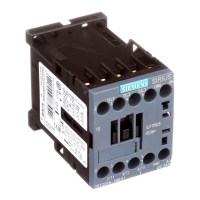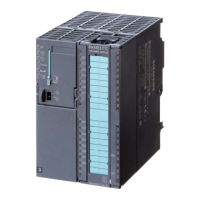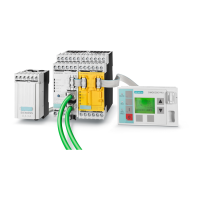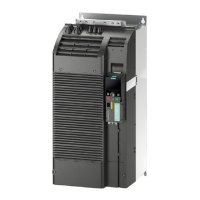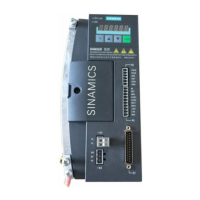Do you have a question about the Siemens Synco RMZ792 and is the answer not in the manual?
Introduces Synco and KNX network, its association, aims, and applications.
Lists Synco devices with KNX TP1 interface and their data sheets.
Defines collective terms used for various Synco device types in the document.
Explains the meaning of product markings found on Synco bus devices.
Explains the structure of a full-scale KNX network with areas, main lines, and lines.
Defines the structure of a KNX network address (Area.Line.Device) and its syntax.
Explains the concept of device address within the KNX network and reserved addresses.
Describes the function and use of area/line couplers and IP routers for network expansion.
Outlines the procedure for designing a KNX network, covering assessment and planning.
Specifies the limits for bus devices on lines, areas, and within a full KNX network.
Explains the bus load number E and its significance for network planning.
Details the requirements and types of bus power supply (Decentral and Central).
Explains the concept of Decentral Bus Power Supply Units (DPSU) and their usage.
Lists power consumption values for various Synco devices and system components.
Describes when central bus power supply (PSU) is required and recommended units.
Explains permissible bus topologies like tree, line, and star configurations.
Provides details on maximum distances and cable lengths for KNX networks with DPSU and PSU.
Lists essential checks required before starting KNX system commissioning.
Provides guidance on commissioning Synco 700 controllers using RMZ operator units.
Details the procedure for starting commissioning with the plant in 'Off' mode.
Explains how to end commissioning, returning the plant to 'Auto' mode.
Describes how to read the factory-set network addresses of RM controllers.
Explains how to assign individual names to Synco RM controllers via operator units.
Step-by-step guide for setting device addresses using RMZ790/RMZ791 operator units.
Introduces the OCI700.1 tool and ACS7 software for commissioning and diagnostics.
Covers establishing connections and managing device lists within the ACS software.
Details the prerequisites and steps for addressing devices using the OCI700.1 tool.
Explains manual, automatic, programming mode, and ID-based addressing for RM controllers.
Covers manual and programming mode addressing for OZW771.xx units.
Details device address 150 for OZW775 and how to change it if necessary.
Explains setting the device address for the QAX910 unit via its operating page or ACS.
Describes manual and programming mode address setting for RXB/RXL room controllers.
Explains how to set the device address for the QAW740 room unit.
Details how to modify the device address for the RMZ792 bus operator unit.
Covers setting area/line addresses for couplers and KNX network addresses for IP routers.
Explains how to configure decentral bus power supply settings for RM controllers.
Details master, slave, and autonomous clock time operation modes for RM controllers.
Describes configuring a time slave to set time and date remotely via the KNX bus.
Explains the 'Remote reset of fault' function for Synco 700 RM controllers.
Describes how to modify basic settings for devices using the ACS Service software.
Provides an overview of Synco zoning based on KNX, covering zones for Synco 700 and RXB/RXL.
Explains how common zone addresses facilitate process value exchange between devices.
Defines the 'Geographical zone (apartment)' by KNX and its relation to operating strategy.
Explains the factory default '----' indicating zones are out of service for RM Series B controllers.
Details how to set zone addresses for RM controllers using RMZ790/RMZ791 operator units.
Explains how to efficiently set zone addresses for extensive networks using ACS Service.
Details zone addressing parameters for RXB/RXL controllers, including parameter numbers.
Highlights important points for designing and commissioning large KNX plants.
Illustrates network topologies for large plants with area/line couplers and IP routers.
Explains the role of IP routers in connecting KNX networks to IP networks.
Details LTE filter settings (Normal, Route all, Block all) for couplers and IP routers.
Shows the relationship between filter settings, zone addresses, and communication areas.
Provides recommendations for using Siemens area/line couplers and IP routers with Synco devices.
Explains how system time, alarms, and time adjustments are handled in LTE mode.
Recommends ACS software for setting addresses and configuration values in large plants.
Lists common communication errors and their types encountered in KNX systems.
Explains how to view and interpret bus fault status messages on the operator unit.
Provides a detailed list of communication errors and their corresponding fault numbers.
Describes the H/C changeover function block and its programming methods.
Explains how to configure heating/cooling changeover using a digital input.
Details how to configure heating/cooling changeover using an analog input.
Explains calendar-based heating/cooling changeover configuration.
Covers H/C changeover relay configuration and associated fault messages.
Presents application examples for linking multiple controllers for room control.
Illustrates zone addressing strategies for commercial buildings with multiple tenants.
Explains how to use additional zone categories like 'room' and 'subzone' in RXB/RXL controllers.
Describes the concept of supply chains and their components in HVAC applications.
Explains data exchange mechanisms in LTE mode using logical tags and zone addresses.
Details how process values are updated, including COV, minimum repetition time, and heartbeats.
Covers protection measures against lightning, overvoltage, and electromagnetic interference.
Explains external and internal lightning protection systems and equipotential bonding.
Describes surge arresters for mains and KNX networks and their protective effects.
Discusses how to avoid loops that cause electromagnetic interference and surges.
Outlines the need for EMC protection management in specific building types.
Introduces Synco and KNX network, its association, aims, and applications.
Lists Synco devices with KNX TP1 interface and their data sheets.
Defines collective terms used for various Synco device types in the document.
Explains the meaning of product markings found on Synco bus devices.
Explains the structure of a full-scale KNX network with areas, main lines, and lines.
Defines the structure of a KNX network address (Area.Line.Device) and its syntax.
Explains the concept of device address within the KNX network and reserved addresses.
Describes the function and use of area/line couplers and IP routers for network expansion.
Outlines the procedure for designing a KNX network, covering assessment and planning.
Specifies the limits for bus devices on lines, areas, and within a full KNX network.
Explains the bus load number E and its significance for network planning.
Details the requirements and types of bus power supply (Decentral and Central).
Explains the concept of Decentral Bus Power Supply Units (DPSU) and their usage.
Lists power consumption values for various Synco devices and system components.
Describes when central bus power supply (PSU) is required and recommended units.
Explains permissible bus topologies like tree, line, and star configurations.
Provides details on maximum distances and cable lengths for KNX networks with DPSU and PSU.
Lists essential checks required before starting KNX system commissioning.
Provides guidance on commissioning Synco 700 controllers using RMZ operator units.
Details the procedure for starting commissioning with the plant in 'Off' mode.
Explains how to end commissioning, returning the plant to 'Auto' mode.
Describes how to read the factory-set network addresses of RM controllers.
Explains how to assign individual names to Synco RM controllers via operator units.
Step-by-step guide for setting device addresses using RMZ790/RMZ791 operator units.
Introduces the OCI700.1 tool and ACS7 software for commissioning and diagnostics.
Covers establishing connections and managing device lists within the ACS software.
Details the prerequisites and steps for addressing devices using the OCI700.1 tool.
Explains manual, automatic, programming mode, and ID-based addressing for RM controllers.
Covers manual and programming mode addressing for OZW771.xx units.
Details device address 150 for OZW775 and how to change it if necessary.
Explains setting the device address for the QAX910 unit via its operating page or ACS.
Describes manual and programming mode address setting for RXB/RXL room controllers.
Explains how to set the device address for the QAW740 room unit.
Details how to modify the device address for the RMZ792 bus operator unit.
Covers setting area/line addresses for couplers and KNX network addresses for IP routers.
Explains how to configure decentral bus power supply settings for RM controllers.
Details master, slave, and autonomous clock time operation modes for RM controllers.
Describes configuring a time slave to set time and date remotely via the KNX bus.
Explains the 'Remote reset of fault' function for Synco 700 RM controllers.
Describes how to modify basic settings for devices using the ACS Service software.
Provides an overview of Synco zoning based on KNX, covering zones for Synco 700 and RXB/RXL.
Explains how common zone addresses facilitate process value exchange between devices.
Defines the 'Geographical zone (apartment)' by KNX and its relation to operating strategy.
Explains the factory default '----' indicating zones are out of service for RM Series B controllers.
Details how to set zone addresses for RM controllers using RMZ790/RMZ791 operator units.
Explains how to efficiently set zone addresses for extensive networks using ACS Service.
Details zone addressing parameters for RXB/RXL controllers, including parameter numbers.
Highlights important points for designing and commissioning large KNX plants.
Illustrates network topologies for large plants with area/line couplers and IP routers.
Explains the role of IP routers in connecting KNX networks to IP networks.
Details LTE filter settings (Normal, Route all, Block all) for couplers and IP routers.
Shows the relationship between filter settings, zone addresses, and communication areas.
Provides recommendations for using Siemens area/line couplers and IP routers with Synco devices.
Explains how system time, alarms, and time adjustments are handled in LTE mode.
Recommends ACS software for setting addresses and configuration values in large plants.
Lists common communication errors and their types encountered in KNX systems.
Explains how to view and interpret bus fault status messages on the operator unit.
Provides a detailed list of communication errors and their corresponding fault numbers.
Describes the H/C changeover function block and its programming methods.
Explains how to configure heating/cooling changeover using a digital input.
Details how to configure heating/cooling changeover using an analog input.
Explains calendar-based heating/cooling changeover configuration.
Covers H/C changeover relay configuration and associated fault messages.
Presents application examples for linking multiple controllers for room control.
Illustrates zone addressing strategies for commercial buildings with multiple tenants.
Explains how to use additional zone categories like 'room' and 'subzone' in RXB/RXL controllers.
Describes the concept of supply chains and their components in HVAC applications.
Explains data exchange mechanisms in LTE mode using logical tags and zone addresses.
Details how process values are updated, including COV, minimum repetition time, and heartbeats.
Covers protection measures against lightning, overvoltage, and electromagnetic interference.
Explains external and internal lightning protection systems and equipotential bonding.
Describes surge arresters for mains and KNX networks and their protective effects.
Discusses how to avoid loops that cause electromagnetic interference and surges.
Outlines the need for EMC protection management in specific building types.
| Brand | Siemens |
|---|---|
| Model | Synco RMZ792 |
| Category | Control Unit |
| Language | English |
